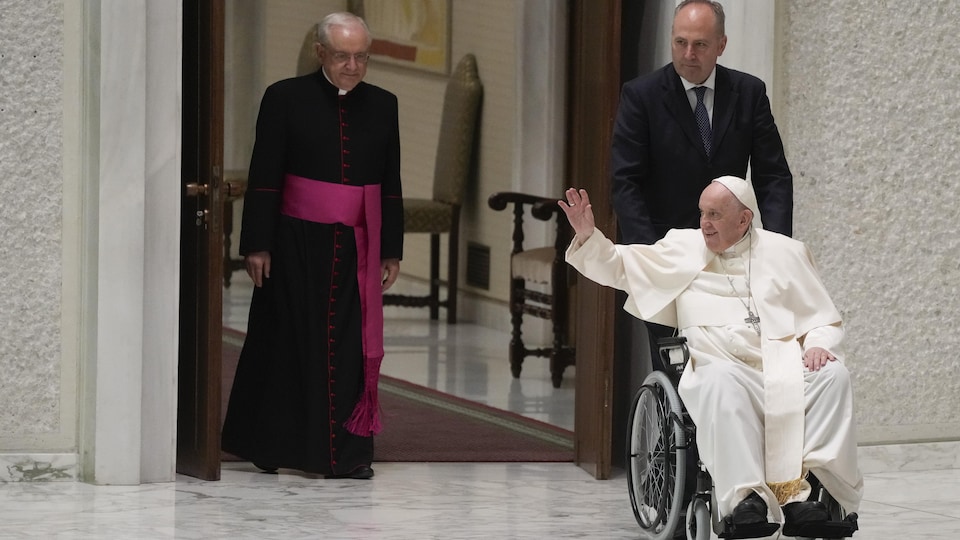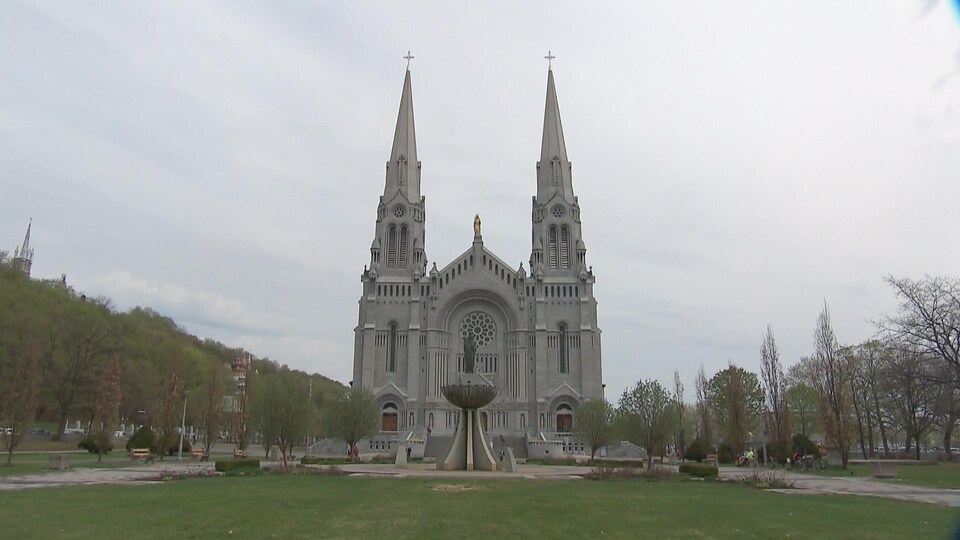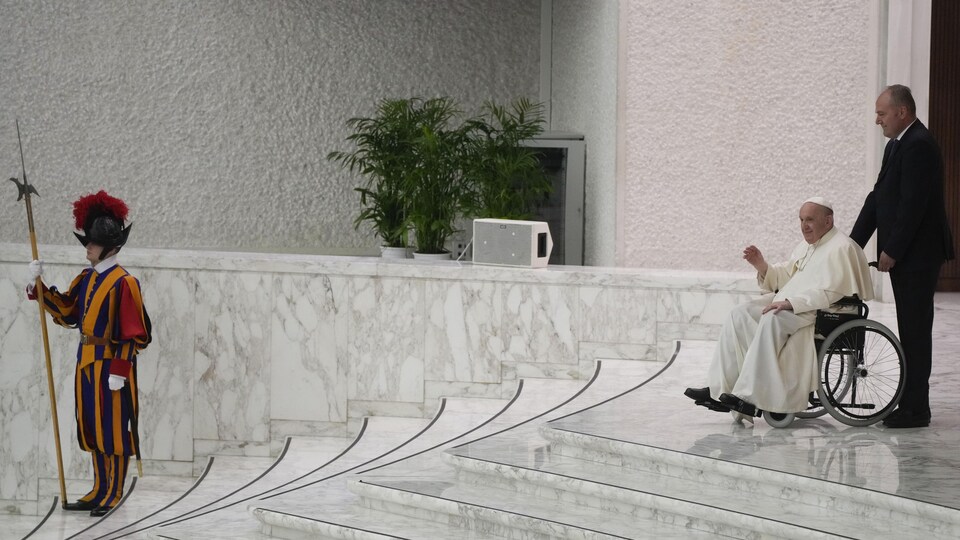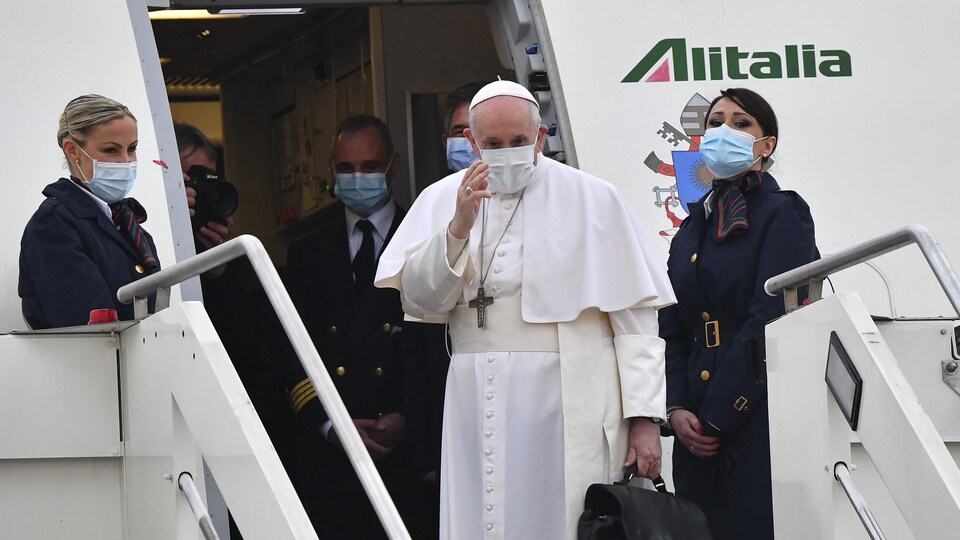The organization of the pope’s trip to Canada, from July 24 to 29, will be “very complicated” and even “chaotic”, according to an organizer who wants to remain anonymous.
The complexity of these logistics, he said, is due, among other things, to the state of health of the 85-year-old pope, who moves in a wheelchair for several weeks.
Logistics restrictions
Because of this situation, the Vatican office that oversees the pope’s travels is dictating to Canadian -based organizers a series of logistical restrictions to limit the movements of the sovereign pontiff.
For example, the head of the Catholic Church can only preside at one major event per day, unless the second event is short -lived and the pope has time to rest temporarily.
The events should be pretty short, because the Pope cannot remain on stage for more than an hour.
For his travels, the sovereign pontiff could not board a helicopter, and he could only stay in the car for a limited time, which limiting the distance he can travel and the number of places he can visit.
Moreover, his state of health does not allow him to sleep every night elsewhere.
The travel program
In view of these obstacles, and the wishes developed by the pope himself, the first phase of his journey, on the Edmonton side, was to take place in a few days around July 26th.
The sovereign pontiff may visit the site of the former boarding school for Aboriginals, as well as Lac Sainte-Anne, a pilgrimage site for Aboriginals who worship Jesus ’grandmother.
At this first stop, in the lands of the First Nation, the pope could repeat his apology for the Church’s involvement in the residential school system.
The sovereign pontiff will then begin his visit by responding to call to action 58 of the Truth and Reconciliation Commission of Canada’s report, requesting an apology from the pope on Canadian soil.
The second phase of this journey will take the pope to Quebec, where a ceremony is to be held at the Sainte-Anne-de-Beaupré basilica, also a place of pilgrimage for Aboriginals with devotion to Saint Anne.
The third and final leg of the papal trip, to Iqaluit, must have been shorter, lasting only a few hours, before the pope boarded the plane back to Rome.
This is the first time a pope has visited the Arctic region.
Coordination work
According to one of the organizers of this visit, the number of teams involved in preparing the trip contributes to its complexity.
At the Vatican, the office in charge of organizing papal trips works with the Canadian papal visit team, which itself must work with the country’s various indigenous communities, as well as with the governments of Alberta, Quebec and Nunavut. welcome to the pope.
” The challenge is that all First Nations, Inuit and Métis are concerned with this journey “
The organization’s team hopes that as many Aboriginal people as possible can take part in this visit, even if the sovereign pontiff only stopped at three places, due to his age and health problems.
On his trip, the pope will be accompanied by a group of about 70 people, including, in particular, his medical team, Swiss guards and gendarmes from the Vatican, those responsible for logistics, and interpreter.
The Pope’s logistics and security officials at the Vatican, make between two and three reconnaissance trips before the papal trip, said the president of the International Association of Journalists Accredited to the Vatican, Loup Besmond de Senneville.
The Vatican expert journalist added that these preparatory trips are intended to visit places, check distances and durations of trips, plan modes of transportation, and book hotels, for entourage of the pope.
Regarding the residence of the sovereign pontiff, the place of residence must meet certain security standards and must be approved by the Royal Canadian Mounted Police (RCMP) and the Vatican Gendarmerie. The area should also be sufficiently accessible for the pope in a wheelchair.
Loup Besmond de Senneville, who followed the pope on his journey to the pope, also thought that special equipment, such as elevators, could be installed, as happened on his last trip to Malta in April.
A tiring trip
This trip is important, and will be pretty stressful logistically, man, and in terms of stress, warns Mr. of Senneville.
The pope will take a long flight, which he has not been able to do in months, […] there will be domestic flights, time differences, and temperature differences.
According to the Vaticanist, this visit of the Pope will be special, because it is a journey of apology for a subject close to his heartand at the same time a physically exhausting journeythree weeks after a several day trip to Africa in early July.
Moreover, on her arrival at the airport, the head of the Catholic Church should be greeted, as required by protocol, by the Governor General, Mary Simon, representing the Head of State, Queen Elizabeth II. His Indigenous status helps a lot, because the Pope will recognize not only the Governor General, but also a Indigenous.said an organizer.
More than an apology?
Within the organization of the pope’s visit, this is to be expected more than just an apology on the part of the sovereign pontiff, because of his encounters with Aboriginal peoples in the Vatican.
Last March, during his audience with the Métis delegation, the Pope said three words in English, to understand himself: truth, justice and well -being.
The president of the Métis National Council, Cassidy Caron, said earlier that she saw it as a personal commitment on the part of the pope, and actions to come.
Aboriginals demand, among other things, the return of things they own, and are in the hands of the Church, as well as access to documents related to residential schools archived in Catholic religious communities.
According to a travel organizer, the pope usually goes to meet with those who have lost faith and hope, to comfort them, but this time. the Holy Father comes to heal the wounds opened by the leaders of the Church themselves.
Source: Radio-Canada





